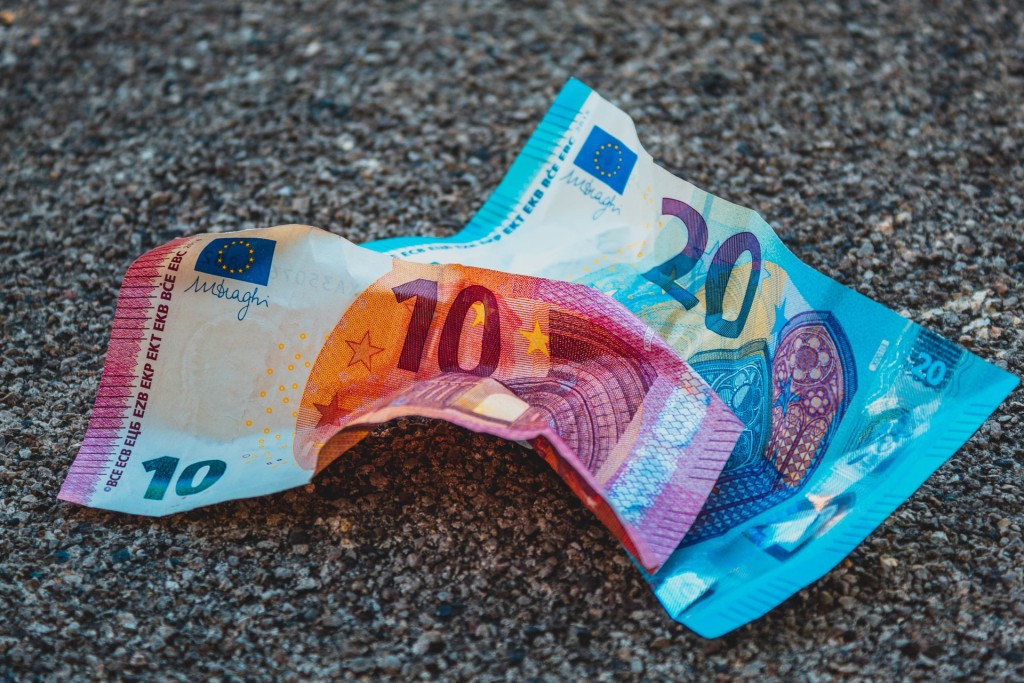The 20th century could be referred to as the century of inflation. Monstrous inflation took place in many countries, such as hyperinflation in Germany in the 1920s, in Hungary after World War II, or in Zimbabwe and Venezuela in the recent past.
An inflation and its opposite, deflation, is a monetary phenomenon that manifests itself as a change in the price level of goods and services; an increase of the general price level is called inflation, and the opposite is termed deflation. Inflation is not about the sum of money in circulation. It works differently.
First, an entrepreneur is willing to create a debt, for example, to finance the production of shoes. The bank will grant him a line of credit and issue a currency – for example, Euro. The newly created euros are basically as if backed by the production of shoes. Our entrepreneur can use this money to buy machines to make shoes, for example.
If successful, he will sell shoes and repay the loan with interest. Euros created in the banking system will then disappear. In this case, therefore, inflation will not occur. There is no reason why it should. Everything went according to the plan and nothing bad can happen.
However, if the entrepreneur did not sell enough shoes, for example because they were not properly made, and did not repay the interest-bearing loan, euros would remain circulating in the economy, failing to fulfill their role. Nobody wanted the shoes, and the euros were used for a bad economic project – useless shoes. Prices in the economy will change.
How much will they change? It depends on how many successful and unsuccessful entrepreneurs will there be within the whole system overall. If everything works as it should, prices will change only little, and we do not even perceive inflation or deflation. Nothing bad is happening. Worse entrepreneurs are replaced by better ones because banks’ interest is to support by credit successful entrepreneurs over unsuccessful.
So, when will we notice inflation? When a more highly significant number of created euros, which represent unsuccessful economic projects, begin to circulate in the economy.
It cannot be determined exactly when it happens, because it also depends on the size of the economy and the proportion of unsuccessful projects. This is not an ideal situation, but both consumers and businesses can deal with a low inflation. They can even adapt to it when calculating their business projects or planning their consumption.
However, as we have mentioned, inflation can become a real monster: the so-called hyperinflation. This is already causing uncontrolled price increases. Businesses and consumers alike then lose the possibilities of their economic planning and economic relations fall apart. The economy is declining and people have a problem securing their basic living needs. When could this possibly happen?
Any hyperinflation in the past was caused in principle as follows. The first step was the government’s plan not to pay its debt. No one else but the government can afford not to repay the debt without going bankrupt. It is only irresponsible politicians who can afford it. Of course, they go about it indirectly at first. Politicians will not say they will not repay the debt.
They are constantly creating new debt to pay off the old one. However, at some point of time, if one of them gets the idea not to repay what they are pushing in front of them, only the central bank buys the government’s debt; politicians either order it to do so or agree with the central bank. If you sense something bad at this point, you are right; this is where the bad money begins to enter the scene.
The information that no government debt repayment will occur is spreading through the economy. Then investors will begin to realize that there is a lot of money circulating in the economy that will never disappear the way as in our example with a shoe businessman. And that’s what triggers what we call the inflationary spiral, which can evolve to monstrous proportions.
Consequently, more and more uncovered, bad money is constantly being added to the economy. The difference between this bad money and the money to make shoes from the beginning of our story was that the money was backed by the idea of making shoes and maybe by a guarantee from our entrepreneur in the form of his own property as a collateral.
However, this bad money is no longer covered by anything; its purchasing power is literally disappearing. As a result, prices in the economy begin to rise wildly, and then no one can plan economically; the tool for the calculation – money – is distorted. Hyperinflation hits the economy and causes an economic collapse.
And why do politicians do that? Sometimes they want to buy the support of electorate with generous public spending programs or they follow the Keynesian idea of employment support. In other cases, the reason can be found in an extensive war spending or the whims of dictators.
Hyperinflation will end exactly when irresponsible politicians will be replaced by more responsible ones who impose fiscal responsibility. To prevent this scenario, it is vital that the central bank remains truly independent of any political influence.
In conclusion, I will just remind you that there is no need to worry about making new money. It is not bad. We only have to worry about making money that is associated with political ideas not to repay government debt. Well, I hope it’s not waiting for us and that our society would be based on honoring creditors.
Continue exploring:
What Do Today’s Entrepreneurs and Governments Have in Common?
Cheap Rhetorical Tricks, Recycled Narratives: Disinformation Actors Running Out of Ideas?



